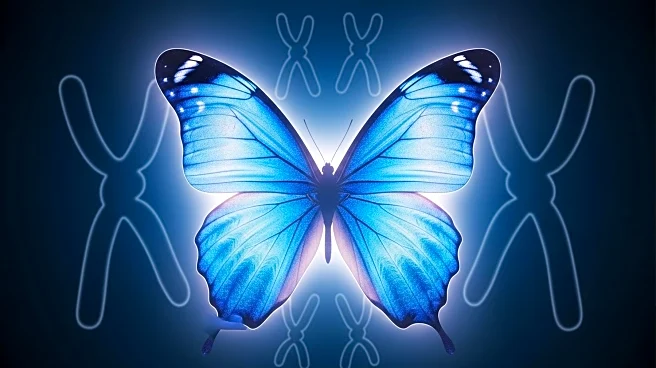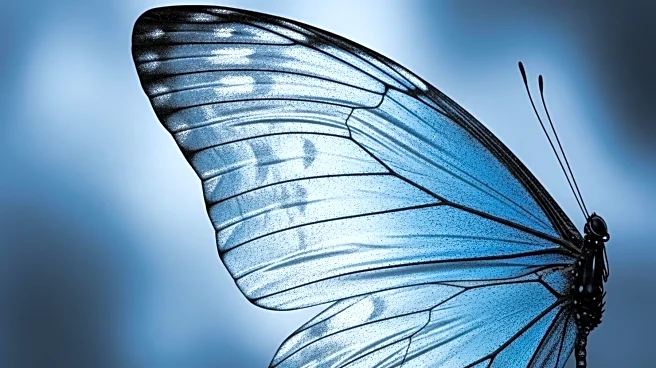What is the story about?
What's Happening?
The Atlas blue butterfly, scientifically known as Polyommatus atlantica, has been confirmed to possess the highest number of chromosomes among multicellular animals, with 229 pairs. This discovery was made by researchers at the Wellcome Sanger Institute and the Institute of Evolutionary Biology in Barcelona. The study, published in Current Biology, reveals that the butterfly's chromosomes have been fragmented over time rather than duplicated. This genetic study provides a gold-standard reference genome for the species, allowing scientists to explore the evolutionary significance of such a high chromosome count.
Why It's Important?
Understanding the genetic makeup of the Atlas blue butterfly could have broader implications for evolutionary biology and conservation efforts. The fragmentation of chromosomes may offer insights into how species adapt and evolve, potentially informing research on genetic diversity and resilience to environmental changes. Additionally, the study's findings could contribute to cancer research, as similar chromosomal changes occur in human cancer cells. By studying these processes in butterflies, scientists may uncover new strategies for addressing chromosomal abnormalities in humans.
What's Next?
Future research will likely focus on the evolutionary advantages of the Atlas blue butterfly's chromosomal structure and its implications for species adaptation. Scientists may also investigate the potential conservation benefits of understanding the butterfly's genetic resilience to climate change. Further studies could explore the parallels between chromosomal changes in butterflies and human cancer cells, potentially leading to advancements in medical research and treatment strategies.
AI Generated Content
Do you find this article useful?














